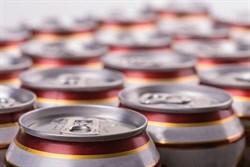BMi Research has released reports on three market segments: malt beer, iced tea and fruit juice...
Malt beer
Recent findings released by BMi Research has revealed that the malt beer category has remained static in volume for the past two years. There have been positive marketing and advertising activities, but these have failed to generate new increased volumes. Tough economic conditions lowering consumer spending is hypothesised to be one of the reasons that the market is not growing. Craft beer, though it is more expensive, has seen significant volume growth off a very small base and the category may be taking share from malt beer.
The value has, however, been showing positive growth for the past five years. The value growth may be attributed to price increases as volume remained stable.
Some changes in the industry:
- Off-consumption has been gaining share since 2013 as cheap beers are more readily available for consumers in shebeens and taverns;
- On-consumption has been losing share to off-consumption and the trend is expected to continue as people buy drinks in retail stores;
- The three major metropolitan areas accounted for 62.2% of total volume have shown slight growth in volume as these regions have large, urban populations and contribute significantly to GDP growth; and
- Glass has been losing share to cans. Cans have shown significant growth in recent years and the launch of 440ml played a significant part in can packaging growth. The 440ml can is bigger and considered cheaper in rands per litre.
"The category is expected to remain static and will only show signs of recovery in the medium term as the economy recovers," said BMi Research CEO, Gareth Pearson.
Iced tea
The RTD iced tea category showed growth in both volume and value in 2014 compared to 2013. The volume and value growth may be attributed to the following factors:
- New products launched and expansion of existing lines;
- New players entering the market with products that are competitively priced;
- Increased promotional and marketing activities;
- Expansion into under-serviced regions and channels; and
- Weaker rand exchange promoting exports.
Despite the positive growth; some of the below factors may have hampered the volume and value growth:
- High fuel prices for most months of the year, with the price coming down towards the end of the year;
- Increase in electricity prices and load shedding; and
- E-tolls in Gauteng main roads increasing transportation costs.
The larger packaging sizes showed higher growth than the 100ml to 750ml group. The growth may be attributed to 1.5 litre size as it is considered cheaper in rand per litre terms.
The price per litre averaged R20.34 in 2014 from R19.11 in 2013. New pack sizes launched in 2014 contributed to high price increase.
Top-end retail distributed 41.6% of total RTD iced tea volume in 2014. On-consumption was the second-largest channel used to distribute volume. The marketing and outdoor promotions may be attributed to on-consumption volume share.
House brands are entering the market with their own product offerings that are lower priced; however they are still low in comparison to branded products on the market.
The year 2014 was characterised by promotions and marketing activities with brands making their presence in the market known.
Fruit juice
The RTD fruit juice market grew in both volume and value in 2014. The category growth may be attributed to the following factors:
- New players and products entering the market;
- Existing players adding and expanding production lines;
- Increased promotional, advertising and marketing activities;
- Expansion into previously under-serviced regions; and
- Increase in the volumes of house brands that are cheaper compared to branded products.
Despite the positive category growth, the following factors may have hampered growth:
- Increases in raw material prices, fuel and electricity making production more expensive;
- E-toll roads in Gauteng - increasing the transportation prices in and around the region;
- Production stops due loading shedding and producers are not able to meet their targets; and
- Decline in consumer spending due to weak economic growth.
There has been a noticeable shift from pure juice to nectar in recent years and the trend is expected to continue as consumers say that pure juice is more expensive. Pure and nectar juice dominate the RTD fruit juice. The smaller packaging size group increased at a higher rate than the family pack sizes. Gauteng, KwaZulu-Natal and the Western Cape, the major metropolitan regions, collectively accounted for 72.7% of total volume sold in 2014. Some players have shifted focus to smaller regions where competition is less. The average selling price per litre increased by 4.3% in 2014. The increase in volume of smaller pack sizes may have contributed to the increase in average selling price.
"The year 2014 was a tough year for some of the players in the market as consumer spending struggled to increase and the category lost share to other non-alcoholic beverages. The category is expected to recover in the mid-term with carton and cans growing in volume," said Pearson.































